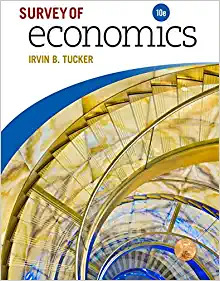


This will highly be appreciated with gooy ratings.
6. Consider an investor who, on January 1, 2016, purchases a TIPS bond with an original principal of $100,000, an 8 percent annual (or 4 percent semiannual) coupon rate, and 10 years to maturity. (LG 6-2) a. If the semiannual inflation rate during the first six months is 0.3 percent, calculate the principal amount used to determine the first coupon payment and the first coupon payment (paid on June 30, 2016). b. From your answer to part a, calculate the inflation-adjusted principal at the beginning of the second six months. c. Suppose that the semiannual inflation rate for the second six-month period is 1 percent. Calculate the inflation-adjusted principal at the end of the second six months (on December 31, 2016) and the coupon pay- ment to the investor for the second six-month period. What is the inflation-adjusted principal on this coupon payment date?The chief executive officer and other senior managers were political appointees, SCL had no policy on risk management, procurement and information communication technology. SCL and its contracted farmers are yet to embrace modern methods of farming. The outgrowers greatly rely on rain to grow their sugarcane. Rain fed sugarcane takes 3 times more time to mature than sugarcane grown using irrigation. Lack of sufficient cane has resulted to SCL shutting down the manufacturing plant most of the times during the year. A number employees are usually laid off during the shut downs. Some shut downs are however scheduled to allow for maintenance of the machine and boilers. These shut downs can last for several months leading to a huge shortage of sugar in the market. The company has a capacity of producing 300,000 metric tonnes of sugar in a year. However, it only produces 100,000 metric tonnes. SCL is highly inefficient, poorly governed and has lost goodwill from farmers and employees. Due to the low pay per metric tonne of sugarcane delivered to the company, its contracted farmers have resulted to selling their sugarcane to its competitors. This adds to SCL's woes since farmers are financed by the company to acquire farm inputs such as fertilizers and seedlings with the hope that the company would recover its money after the delivery of sugarcane and before making payments for the sugarcane delivered. The competitors of SCL use the latest technology to manufacture sugar. SCL, a company which used to control 79% of the market share uses an archaic technology. For SCL to return to profitability, the company has no choice but to acquire integrated enterprise resource management software. With trade liberalisation, competition has gone a notch higher. More private sugar factories are being established which pay employees better and farmers on time. Business people are importing cheaper sugar which they sell at a price below the cost of production at SCL. The company has on various occasions imported sugar which it packaged and sold to the local market instead of manufacturing sugarcane from local farmers. In some instances, earnings from imported sugar ended up in private accounts of the senior managers. Early in the year 2015, the company suspended a number of employees implicated in irregular termination of contracts with farmers. The company lost 400 million shilling mostly through legal suits. More money was lost as the company ignored guidelines on pricing. SCL's procurement systems did not conform to the government's procurement and disposal regulations. Other malpractices in the company include: . A large amount of sugar that is manufactured by SCL leaves the stores of the company undocumented. This is done with the knowledge of senior management and security officials at the factory. . Collusion between sugar distributors and senior officials of SCL to give undocumented credit advances to selected distributors. . Laxity in collecting sales proceeds from buyers in order to earn interest and kickbacks for sales officials. . Not harvesting contracted farmers cane on time. A farmer has to bribe SCL's employees for sugarcane to be harvested.SCL is an important company to the economy since many livelihoods depend on the company for survival. The government in the past came up with interventions which seem not to work. Some of these interventions are: The setting up of importation quotas and punitive customs duty on imported sugar. Writing off loans to millers such as SCL and farmers. . Assisting SCL to settle debts to farmers. . Improving infrastructure such as roads in the sugar belts. . Reduction in tariffs on raw materials and capital inputs. It is evident that for SCL to be saved from collapse, more strategies need to be developed. Mere lip service will not help turnaround a company which was once a gem in the sugar belt. Required: a) With the use of suitable examples, illustrate how the code of governance for state corporations in your country has been flouted by SCL. "b) Explain five measures that SCL should put in place to ensure that the company is competitive in the market. c) Suggest six remedies available to SCL where directors are found culpable of breaching fiduciary duties. d) Assuming that you are a corporate strategy consultant and SCL has approached you for advice. on modernisation of the company's operations, suggest six modules that should be included in the integrated enterprise resource management software for the company. e) Assess five unethical practices propagated by various agents of SCL












